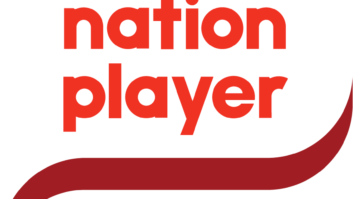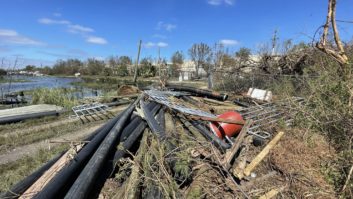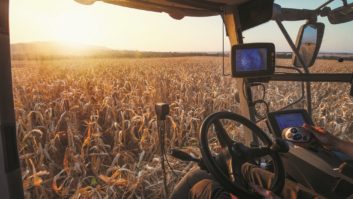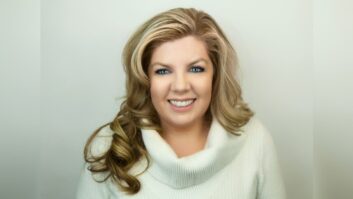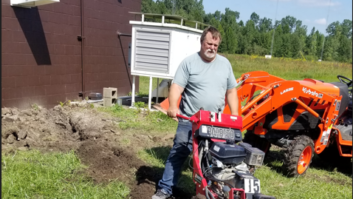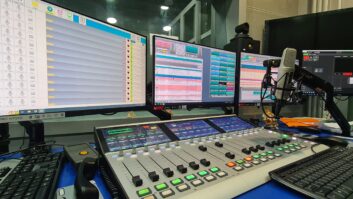Education Installation: Illinois Center for Broadcasting
Sep 1, 2012 1:50 AM, By Chriss Scherer, editor
The Illinois Center for Broadcasting provides a real-world learning environment
The Ohio and Illinois Centers for Broadcasting operate six campuses. Three are in Ohio (Cincinnati, Columbus and Cleveland), two are in Illinois (Chicago and Lombard, IL), and one is in Colorado (Lakewood). The school was founded in 1986, and the curriculum covers all aspects of broadcasting through a hands-on program instructed by professionals. The Centers for Broadcasting have educated scores of broadcast professionals on the air and behind the scenes. The centers strive to provide practical experience in a broadcast facility. To do this, the facilities are updated regularly to ensure the equipment is representative of modern broadcast operations.

The Lombard campus occupies 15,000 square feet and has 15 audio studios. Three Internet radio stations broadcast from this facility, which was completed in 2009, although the school has had other campus facilities in Lombard for more than 25 years.
While the Lombard campus filled a need, the school decided it needed a facility in Chicago. In 2010, the Illinois Center for Broadcasting opened its facility on State Street in Chicago.

The main studio looks out onto State Street.
Location, location
The site chosen on State Street is a highly visible location, and some 65,000 college students live in the area and see the street-front studios every day. The showcase studios not only promote the school, but allow passersby to see the school and the various broadcast programs in action. Two Internet radio stations operate from here: chicagolandsportsradio.com and windycityunderground.com. The sports channel features former football player Jarrett Payton, who is also the son of Walter Payton, and Chicago broadcaster Chet Coppock. The underground station is completely student run.
– continued on page 2
Education Installation: Illinois Center for Broadcasting
Sep 1, 2012 1:50 AM, By Chriss Scherer, editor
The State Street location has two radio studios: one on-air studio and one production studio. They both have windows looking out to the street, and it’s common for people on the street to peek in and watch radio being made.

There’s still a view to the street in the second State studio, which is a smaller studio.
But not long after the State Street facility was built, it was realized more space and additional studios were needed. A second Chicago facility was built a few blocks at LaSalle and Harrison. This facility features 12 radio studios. With this expansion, the LaSalle and Harrison location became the primary audio production and training facility, and video production was set up on State Street while leaving the showcase studios in place.
A real facility
To provide a real-world operational experience, the school built the State Street studios around Arrakis consoles. The Marc-15 and Arc-8 consoles were chosen because they are typical of a radio console and don’t have too many unneeded features and buttons. The school also had experience with Arrakis products and likes the reliability. The automation system connects to the console via the console’s USB connection.The LaSalle facility has 15 studios, and all are equipped with Arrakis Arc-8 consoles. Other equipment includes Sam Broadcaster for automation, Shure SM27 mics, PreSonus DigiMax D8 preamps, Alesis 3630 compressors, a Symetrix 6100 broadcast delay, Comrex Access codec, Tascam CD-RW900SL CD players and Adobe Audition 3.0. Belden 9451 was used to wire the facility.
All the studios also have webcams so the students can learn about video production and web streaming. Telestream Wirecast is used for switching the video from the multiple webcams.
– continued on page 3
Education Installation: Illinois Center for Broadcasting
Sep 1, 2012 1:50 AM, By Chriss Scherer, editor
Each campus operates on its own. A computer network connects all the facilities to transfer data.
When the State Street studios, all the equipment was specified with exact needs in mind, but with flexibility for whatever may be needed in the future. The studios are a bit small, so there’s little room for unneeded equipment. This saves space of course, but there was also a desire to preserve the acoustics. With large windows already in place, stacks of racks were avoided to reduce unwanted audio reflections.

One of the editing suites at the LaSalle Street facility.
The original studio plan had T-shaped furniture. While this looked good on paper, it took up too much floor space. It was also realized that with a sports format coming in — and the above-average-sized football players — more talent space was needed. The T design was eliminated.
The show producer was also originally in the studio. As the studios saw more use and added additional hosts, the producer had to moved outside the studio.
The Chicago school graduates about 125 students each year through its one-year, nationally accredited program. Alumni now working in broadcasting often return as guest speakers as well, giving back some of their practical experience to the next broadcasters. Through its efforts, the Illinois and Ohio Centers for Broadcasting are educating the next generation of broadcasters.
Equipment List
Arrakis Arc-8, Marc-16
Shure SM27
PreSonus DigiMax D8
Alesis 3630
Sam Broadcaster v4.7
Stream the World
Belden 9451
Symetrix 6100
Comrex Access
Tascam CD-RW900SL
Adobe Audition 3.0
Telestream Wirecast
Telos One + One
September 2012
ESPN Radio broadcasts the All Star Game, the latest in program distribution, portable PAs, and Field Reports on Adobe Audition CS6 and the RDL HR-MCP2….





